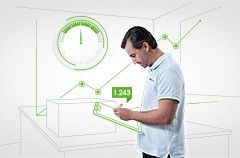
Rainin Liquid Handling Solutions
Liquid Handling Instruments and Consumables for Life Sciences
Life scientists around the world rely on high-quality liquid handling equipment from Rainin. Our premium instruments and consumables reflect our passion for exceptional quality and innovative design. They are built to deliver years of accurate, reliable and ergonomic operation. Pipetting 360+ reflects our commitment to providing the very finest in pipettes, pipette tips, service and support.
Expert Service – Tailored to Fit Your Pipetting Needs
METTLER TOLEDO supports and services your pipettes through their entire life-cycle, from good pipetting techniques to preventive maintenance and calibration to equipment repair.

Order Pipette Service & Calibration
FAQs
What does Rainin make?
METTLER TOLEDO designs, manufactures and expertly services Rainin liquid handling equipment for life science research. We are dedicated to helping end-users improve their techniques to achieve accurate, consistent results and maintain the safety of their work. The Rainin product line includes premium pipettes, ultra-pure pipette tips, high-throughput pipetting systems and specialized pipetting instruments. We also offer software to help labs quickly and efficiently manage their pipette inventories to assure optimal performance – and SOP compliance.
Where are Rainin products made?
Rainin operations and manufacturing is based in Oakland, California. We are a subsidiary of METTLER TOLEDO, which has headquarters near Zurich, Switzerland.
How many people work at Rainin?
METTLER TOLEDO employs more than 700 people at its Rainin manufacturing site in Oakland, California, and nearly 300 globally who support the Rainin product line. METTLER TOLEDO employs more than 12,000 people worldwide.
Are Rainin instruments available globally?
Yes, Rainin liquid handling instruments and consumables are used (and loved!) by labs around the world. To reach your local METTLER TOLEDO sales representative, visit www.mt.com/rainin and click on "Contact Us." Labs in the U.S. can purchase Rainin products online at www.ShopRainin.com.
How can I apply for jobs at Rainin?
Visit the METTLER TOLEDO careers page – mt.com/careers – and include the keyword "Rainin" in your search.














